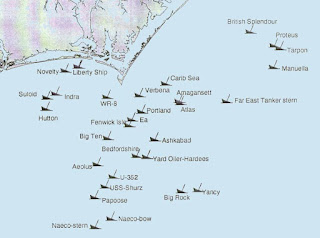SHARK PROYECT’S LOGBOOK
THIRD STAGE
Photograph Sand Tiger Shark
I went to the city of Morehead, North Carolina from August 4 to the 9th with the intention of photographing the third shark and, in the quest to find the 10 most dangerous sharks in the world. This was the time to photograph the Sand Tiger Sand, whose jaws may scare every human being, who sees this animal.
This place is world famous to dive for two reasons; the first one is the number of wrecks, where you could find all kinds of ships, even a german submarine sunk by the American Army, some of the shipwrecks were sunk due to the bad weather while other were placed there with the purpose to house artificial reefs. The second reason is the tiger sand shark they had chosen this wrecks to live in therefore this ships are with a great variety of tropical fish, which serve the tiger sand shark as food.
We dove for three days through the different shipwrecks, like the Titan, the USS Indra and the USCG Spar. At these diving, we got the chance to see turtles, a huge amount of reef fish and in one dive, we saw more than twenty tiger sand sharks.
Diving with these powerful sharks that can measure up to 9.87 feet and weight up 1000 pounds. It is thrilling, they glide though the water with a hand full of fish around their bodies, and these smart fishes use the shark as shield for protection for other menacing and bigger threats.
While diving you can see them swim next to the grey and rusty structures from the wreck as they were ghosts from the ship´s crew.
It was impressive, we got so close to some sharks that we were able to touch their bellies and see their jaws as near as 20 cm from the lenses of our cameras.
In this journey, I had the chance to meet with great photographers and submarine videographers like Andy Murch, Scott Johson, and Joe Romeiro among others, who gave me excellent advices to improve my photographs. I also shared some valuable moments to chat about what we like the best, “Diving with sharks”
With this stage finished, we had dived with three of the most dangerous sharks: Tiger shark, Bull shark and Tiger Sand shark. At our next stage we will be photographing the Mako shark and the Blue shark at Catalina Island USA and if we are lucky we will get to the 50% from the “Shark Project”
More about shark proyect: http://www.gerardodelvillar.com/ingles/proyecto.html
More about firts stage: http://www.gerardodelvillar.com/ingles/tigre.html
More about second stage: http://www.gerardodelvillar.com/ingles/toro.html



























